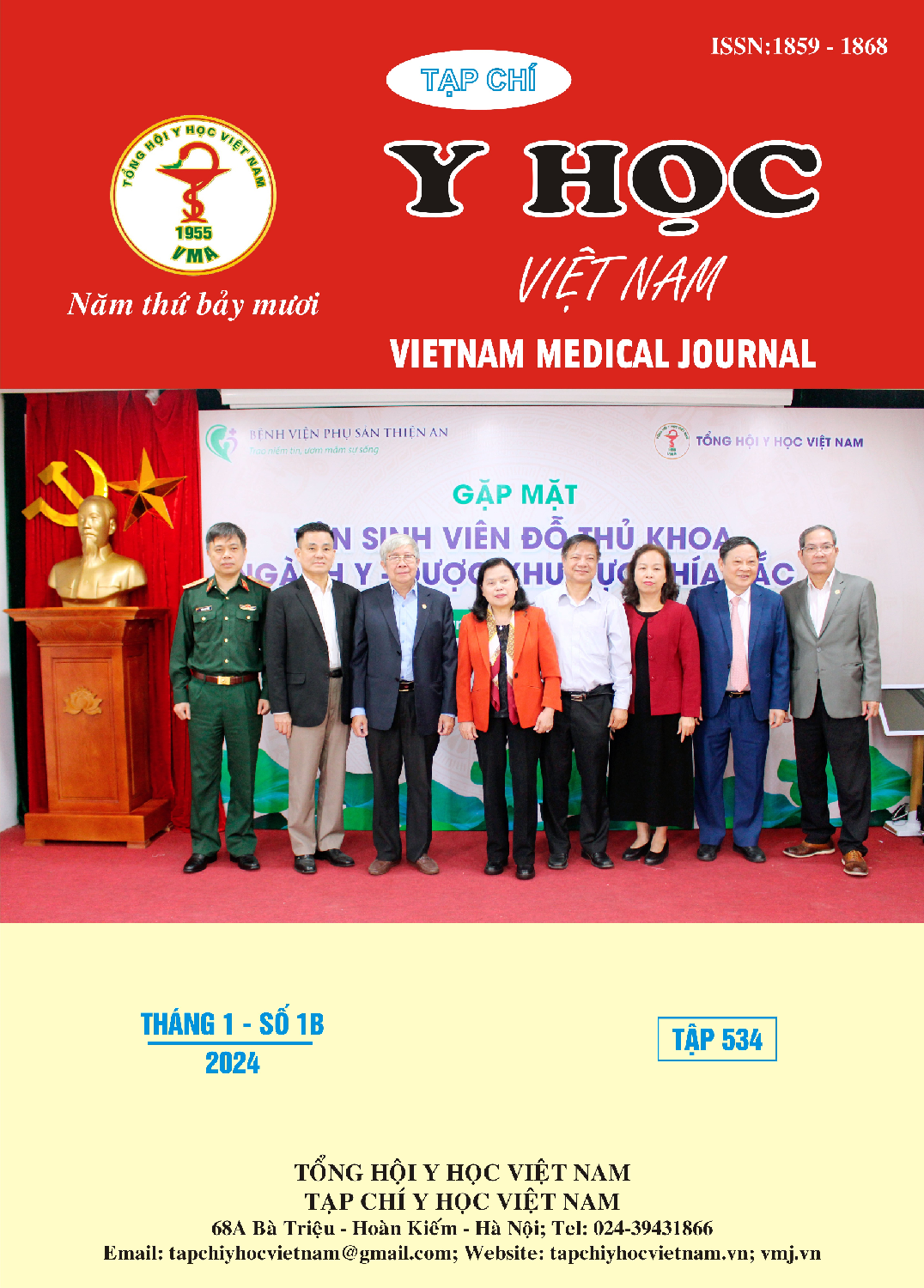THE EVALUATION ON THE RESULT OF STAGHORN KIDNEY STONES MANAGED BY MINI PERCUTANEOUS NEPHROLITHOTOMY AT THE HOSPITAL OF POST AND TELECOMMUNICATIONS
Main Article Content
Abstract
Objective: The aim of this study is to evaluate the treatment result of staghorn stones by mini percutaneous nephrolithotomy at the Hospital of Post and Telecommunications. Subject and method: This is a descriptive study of 85 patients with staghorn stones treated by the mini-percutaneous nephrolithotipsy at the Hospital of Post and Telecommunications from period of June 2022 to June 2023. Result: We studied 85 patients whose average age was 54,6 ± 9,5 with the mean size of stones be 37,2 ± 7,2 mm. There was 65,9% of 85 patients to have more than one staghorn kidney stone and 34,1% is for the solitary stag horn stone. Regarding classification of stones, staghorn stones S3,S4,S5 accounted for 54,1%,31,8% and 14,1% respectively. The most often appropriate puncture site was lower calyx of kidney which accounted for 52,9%, middle calyx of kidney was 42,4% and upper calyx of kidney was 4,7%. Bleeding complication during surgery was 2,4% by which blood transfusion was required. The mean operative time was 75,4 ± 18 minutes. The complication was 11.8% but mainly was fever caused by post-surgery infections. The primary free-stone rate after PCNL was 76,5%. There was 14 cases performed 2nd Mini PCNL and free stone rate has been reported at 89,4% after one month. Conclusion: Treatment of staghorn stones by mini percutaneous nephrolithotomy treatment at the Hospital of Post and Telecommunications is safe and effective method with high free-stone rates and less complications rate.
Article Details
References
2. Vũ Văn Ty. “Lấy sỏi thận qua da”. Y học TP. Hồ Chí Minh, 2015; 19(4), tr 7 – 15.
3. C. Türk (Chair), A. Skolarikos (Vice-chair), A. Neisius. EAU Guidelines onUrolithiasis. 2019. pp28 – 30.
4. Akif Diri and Banu Diri. “Management of staghorn renal stones”. Ren Fail, 2018; 40(1): pp357 – 362.
5. Pan, T., B. Liu, S. Wei, et al. “Flank-suspended versus prone percutaneous nephrolithotomy: changes of haemodynamics, arterial blood gases and subjective feelings”. Urologia, 2015; 82(2): pp. 102 – 5.
6. Zhu, W., J. Li, J. Yuan, et al. “A prospective and randomised trial comparing fluoroscopic, total ultrasonographic, and combined guidance for renal access in mini-percutaneous nephrolithotomy”. BJU Int; 2017; 119(4): pp 612 – 618.
7. Nguyễn Nhật An, Lê Ánh Nguyệt, Cao Quyết Thắng. “Đánh giá kết tán sỏi thận qua da đường hầm nhỏ điều trị sỏi san hô tại Bệnh viện Quân Y 103”. Y Học Việt Nam; Tập 519 Tháng 10 Số Chuyên Đề 2022.
8. Nguyễn Minh An, Đỗ Hải Hùng. “Đánh giá kết quả điều trị sỏi thận san hô bằng phương pháp tán sỏi qua da đường hầm nhỏ tại Bệnh viện Đa khoa Tỉnh Hải Dương năm 2020”. Y Học Việt Nam; Tập 503 Tháng 6 Số 2 Năm 2021.
9. Ahmed R. El-Nahas, Ibrahim Eraky, Ahmed A. Shokeir. “Percutaneous nephrolithotomy for treating staghorn stones: 10 years of experience of a tertiary-care centre”. Arab Journal of Urology, 2012; 10, pp324 – 329.


